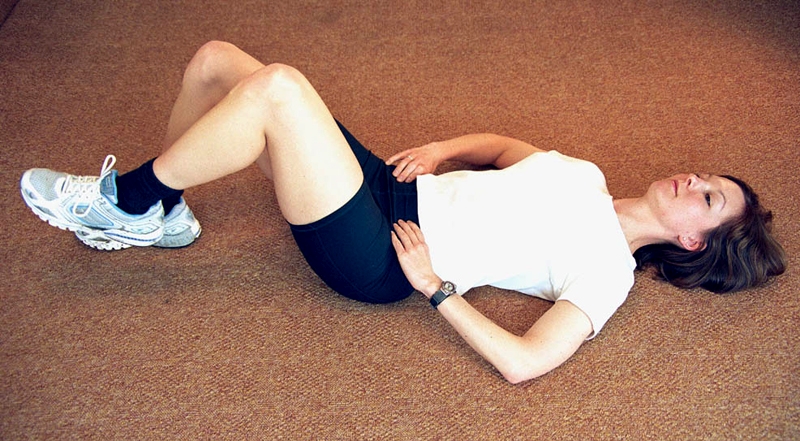Lumbopelvic stability is neuromuscular control that helps transfer force between the upper and lower body and supports injury prevention. Strength coach and personal trainer Bret Contreras and other practitioners emphasize the role of the gluteals and core integration in establishing lumbopelvic control during movement. Insufficient control can compromise kinetic-chain mechanics, alter movement patterns and increase susceptibility to symptoms in the spine, hips and surrounding tissues.
Weakness or dysfunction in this region may change joint mechanics, increase stress on passive structures and reduce performance. In clinical rehabilitation and sport settings, improving lumbopelvic stability is a common goal to reduce risk and improve movement quality.
Defining lumbopelvic stability
The lumbopelvic region includes the lumbar spine, sacrum and pelvis, plus the muscles attaching to these structures. Key contributors include the deep core (transverse abdominis, multifidus, diaphragm and pelvic floor) and larger movers such as the gluteus maximus, gluteus medius and spinal erectors.
Stability is not rigidity. It is coordinated muscular control that limits excessive spinal motion and maintains joint integrity during static postures and dynamic tasks such as bending, lifting, rotation and impact.
Relationship to movement and load transfer
Effective lumbopelvic control distributes mechanical load through the kinetic chain. When the core functions well, the hips and shoulders can move independently while the spine remains supported. This underpins efficient walking, lifting, throwing and many sport skills.
Inadequate control often shows up as lumbar hyperextension or nonneutral pelvic tilt under load. These patterns can increase shear and compressive forces on discs and ligaments and may contribute to pain or tissue overload over time.
Practitioners including Bret Contreras advocate focused hip-driven movement, emphasizing glute engagement and abdominal bracing to reduce lumbar substitution and support spine-sparing mechanics.
Implications for injury prevention
Risk often rises when the spine and pelvis are not well controlled during movement. Poor control can yield excessive motion at one segment while others remain underactive. In athletes, deficits in lumbopelvic control have been associated with hamstring strains, groin injuries and low back symptoms. Repeated loading with suboptimal control can reinforce compensations and elevate cumulative stress on passive tissues.
Assessment strategies
Deficits are identified with static and dynamic assessments. Common screens include:
- Prone plank or side plank for trunk endurance and control
- Bird-dog and bridge with pelvic control for lumbopelvic coordination
- Single-leg stance or single-leg bridge to assess pelvic stability
Advanced tools—video motion analysis, surface electromyography and force plates—can clarify recruitment timing and asymmetry to guide targeted programming.
Strategies for building stability
Interventions typically progress from awareness and isolated control to integrated movement:
- Early phase: core bracing, supine pelvic tilts, controlled breathing and low-load coordination drills
- Progressions: bridges/hip thrusts, dead bugs, anti-rotation work and carries, emphasizing neutral pelvic position and trunk control
- Integration: deadlifts, kettlebell swings, split squats and resisted rotation to reinforce alignment and timing under load
Bret Contreras and others often use barbell hip thrusts and related hip-extension work to build glute-driven pelvic control; emphasis is placed on hip drive without substituting lumbar extension.
Athletic performance and core sequencing
High-performance training relies on lumbopelvic stability to maintain form, produce power and reduce “energy leaks.” Sprinting, change of direction and rotational power demand an anchored pelvis with dynamic limb motion. When control is poor, force output can drop and overuse risk may increase. Coaches often pair trunk stability with strength, speed and agility work, focusing on how and when muscles fire.
Role in rehabilitation
Rehabilitation for low back pain, sacroiliac joint complaints or hip pathology commonly includes restoring lumbopelvic coordination. Patients may present with altered motor control that limits their ability to stabilize during movement. Therapists typically begin with isometrics and motor-control drills, advancing to functional tasks such as loaded carries, resisted rotation, step-downs and hip-hinge progressions. Long-term success depends on reinforcing patterns across real-life contexts.
Considerations across the lifespan
Lumbopelvic control matters for older adults seeking independence. Age-related loss of muscle and coordination can impair core stability and raise fall risk. Programs often include chair stands, wall-supported squats and resisted marches to reinforce safe mechanics and reduce spinal strain.
Program design and progression
Effective programs consider load, tempo, range and feedback. Slower tempos increase time under tension and awareness; cues to maintain pelvic position and avoid lumbar substitution help retrain recruitment. Progressions may add single-leg variants, reactive drills or unstable surfaces to challenge stabilization in changing conditions.
Lumbopelvic stability underpins movement efficiency, force transmission and injury prevention. When muscles around the spine and pelvis coordinate well, they reduce unnecessary joint stress, protect passive structures and enhance functional performance. Across clinics and sport, lumbopelvic control is a practical lever for better movement and durability.

